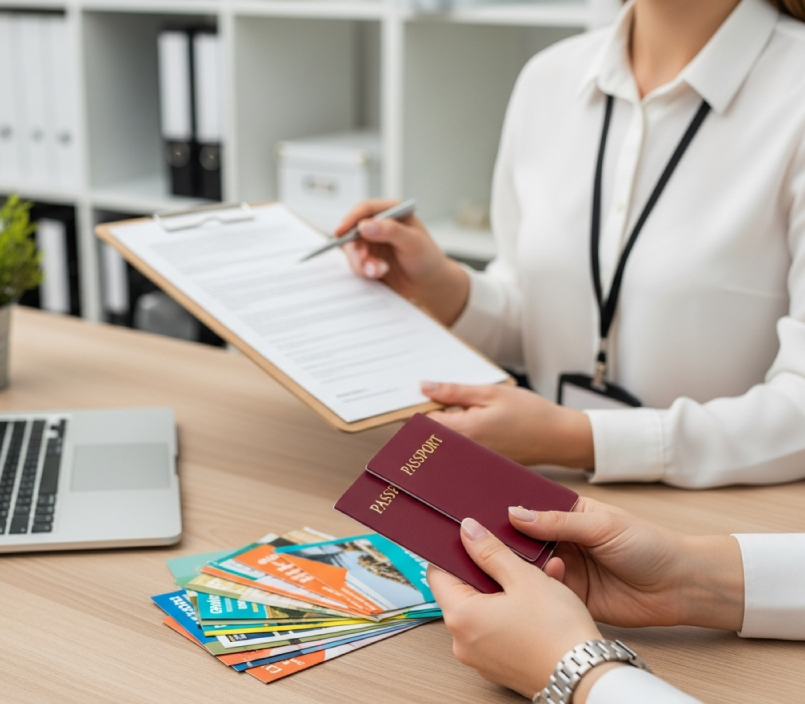Updates:Second Citizenship & Residency by Investment | Global Citizen Investment Partners
- 5 Brayford Square London E1 0SG
- info@globalcitizeninvestment.com
Your Complete Guide to Applying for Residency and Second Citizenship
- Home
- Your Complete Guide to Applying for Residency and Second Citizenship

In a globalized world, opportunities are no longer limited by borders. Whether you’re looking for better career prospects, lifestyle upgrades, tax benefits, or simply more travel freedom, residency and second citizenship programs can open doors to possibilities that your primary passport may not provide.
This guide will walk you through what residency and second citizenship mean, their benefits, how to apply, the requirements, and practical tips to help you navigate the process successfully.
- Understanding Residency and Second Citizenship
Before starting your application, it’s important to understand the difference between residency and citizenship:
- Residency: A legal status that allows you to live in a country for a set period (temporary residency) or indefinitely (permanent residency). You keep your original citizenship but enjoy the right to live, work, and sometimes study in the new country.
- Second Citizenship: Full legal citizenship in another country. You gain the same rights as native-born citizens, including voting, holding a passport, and benefiting from the country’s protection. This is often called dual citizenship if your home country allows you to keep your original nationality.
- Why People Apply for Residency and Second Citizenship
The reasons vary, but here are the most common motivations:
- Freedom of Travel
Many second citizenship programs grant visa-free or visa-on-arrival access to dozens—or even hundreds—of countries. For example, a Maltese or St. Kitts and Nevis passport provides access to the EU and Schengen Area without a visa.
- Business and Career Opportunities
Residency or citizenship in another country can unlock business expansion, better job prospects, or easier access to international markets.
- Education and Healthcare
Some countries offer free or subsidized education and healthcare to residents and citizens, making it an attractive choice for families.
- Political or Economic Stability
For those from unstable regions, a second passport offers a safe haven and security for assets and family members.
- Tax Benefits
Some jurisdictions have favorable tax systems, including zero tax on foreign income, capital gains, or inheritance.
- Popular Residency and Citizenship-by-Investment Programs
Here are some well-known destinations offering accessible programs:
Residency by Investment (RBI)
- Portugal Golden Visa – Invest in real estate, funds, or create jobs to gain residency and a path to citizenship in 5 years.
- Greece Golden Visa – Affordable property investment starting at €250,000 for residency rights.
- United Arab Emirates – Investor and skilled professional residency programs with tax-friendly policies.
Citizenship by Investment (CBI)
- Saint Kitts and Nevis – One of the oldest CBI programs, granting citizenship in as little as 4–6 months.
- Antigua and Barbuda – Affordable options for families, including a $100,000 government donation.
- Malta – A premium program offering EU citizenship through a combination of donation, investment, and residency.
- Step-by-Step Process to Apply for Residency or Citizenship
While the specifics vary by country, most applications follow these stages:
Step 1: Research and Choose the Program
Consider:
- Your budget
- Timeframe for approval
- Benefits (visa-free countries, lifestyle, tax system)
- Residency requirements (minimum stay, renewal rules)
Step 2: Prepare Documentation
You will typically need:
- Valid passport
- Birth certificate
- Police clearance (no criminal record)
- Proof of funds or investment
- Medical examination report
- Marriage or family documents (if applicable)
Step 3: Make the Investment (If Required)
For RBI and CBI programs, the investment must be made before or during the application process. This can be real estate, government bonds, or a business venture.
Step 4: Submit the Application
Applications are often submitted through licensed agents or immigration lawyers authorized by the country’s government.
Step 5: Background Checks
Authorities conduct thorough due diligence to ensure applicants have a clean background and legitimate source of funds.
Step 6: Receive Residency or Citizenship Approval
Approval times vary—some citizenship programs take just a few months, while others require several years of residency before naturalization.
- Key Considerations Before Applying
- Cost
Beyond the investment, you’ll pay government processing fees, agent fees, and sometimes annual renewal fees.
- Minimum Stay Requirements
Some countries require you to spend a certain number of days per year in the country to maintain residency or qualify for citizenship.
- Dual Citizenship Rules
Not all countries allow dual citizenship—some require you to renounce your original nationality.
- Tax Implications
Be aware of how your new residency or citizenship will impact your global tax obligations.
- Common Mistakes to Avoid
- Choosing Based Only on Cost – The cheapest program may not meet your travel or lifestyle needs.
- Ignoring Residency Obligations – Failure to meet stay requirements can result in losing your status.
- Not Seeking Professional Guidance – Immigration law can be complex; working with an expert reduces the risk of rejection.
- Overlooking Family Inclusion Rules – Ensure your spouse, children, or parents are eligible under your chosen program.
- Tips for a Smooth Application Process
- Work with Authorized Agents – This ensures your application is compliant and reduces fraud risks.
- Keep Your Documents Updated – Expired passports or outdated financial records can delay approval.
- Plan Your Finances Early – Large investments require proof of legitimate income or savings.
- Understand Renewal and Citizenship Requirements – Avoid surprises by knowing long-term obligations.
- The Future of Residency and Citizenship Programs
Global mobility is becoming increasingly important. As more countries compete to attract investors and skilled migrants, we can expect faster processing times, more flexible investment options, and digital nomad pathways in the future. However, programs may also tighten due to political pressures, so applying sooner rather than later can be beneficial.
Search
Categories
Popular Tags
Subscribe Us
Subscribe us & get
latest news & articles to inbox.


Post a Comment